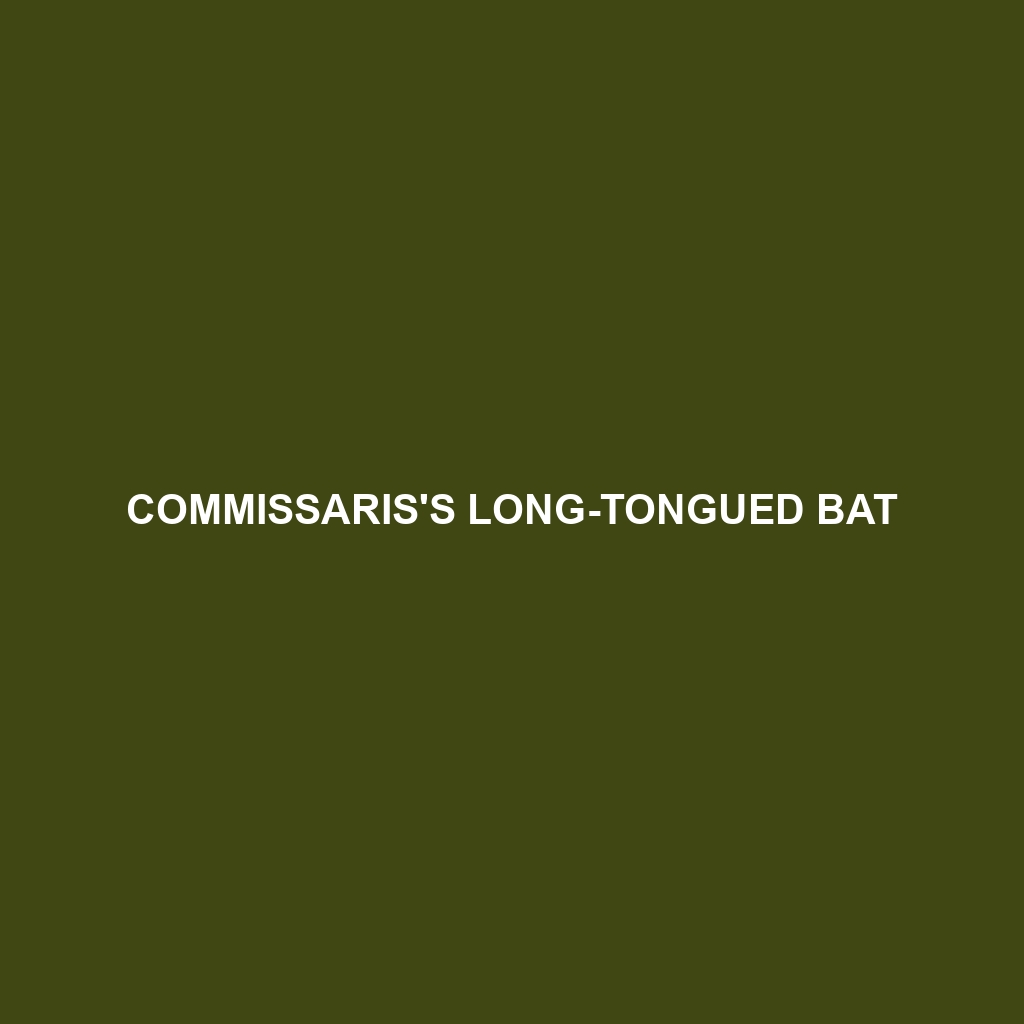Baker’s Long-tongued Bat
Common Name: Baker’s Long-tongued Bat
Scientific Name:
Habitat
The Baker’s Long-tongued Bat is primarily found in subtropical and tropical regions of Central and South America. Key geographical locations include parts of Brazil, Colombia, and Ecuador. These bats thrive in humid forests, grasslands, and areas near water bodies where they can find abundant floral resources.
Physical Characteristics
This species is characterized by its elongated tongue, which is adapted for nectar feeding. Adult Baker’s Long-tongued Bats typically measure between 8 to 10 centimeters in body length, with a wingspan reaching up to 30 centimeters. Their fur is soft and varies in color from light brown to grayish tones, often with a lighter underside. Notable features include their large ears and pointed snouts, which aid in their foraging.
Behavior
Baker’s Long-tongued Bats are nocturnal creatures exhibiting various behaviors, such as roosting in tree hollows during the day and foraging for food at night. They are known for their agility in flight and ability to hover while feeding on nectar from flowers, making them crucial pollinators in their habitat.
Diet
The diet of the Baker’s Long-tongued Bat consists primarily of nectar, but they also consume pollen and occasionally fruit. They play a vital role in the pollination of several plant species, which depend on their feeding habits to reproduce. This makes them essential for maintaining the health of their ecosystem.
Reproduction
Breeding season for Baker’s Long-tongued Bats typically occurs during the warmer months after the flowering season. Females usually give birth to a single pup after a gestation period of approximately 2 months. While parental care is primarily provided by the mother, the pups are nursed until they are capable of foraging independently.
Conservation Status
The current conservation status of the Baker’s Long-tongued Bat is classified as vulnerable. Habitat loss due to deforestation and agricultural expansion poses significant threats to their population. Conservation efforts are necessary to protect these bats and their natural habitats.
Interesting Facts
One fascinating fact about the Baker’s Long-tongued Bat is its unique ability to adapt its tongue length to reach nectar in varying depths of flowers. Additionally, it can travel considerable distances in search of food, making it one of the most efficient nectar feeders among bats.
Role in Ecosystem
Baker’s Long-tongued Bats play a vital role in their ecosystem as pollinators. By transferring pollen from flower to flower, they facilitate the reproduction of several plant species. This not only helps maintain plant diversity but also supports the broader food web, as many animals depend on these plants for survival.
This HTML format provides an SEO-optimized and comprehensive description of the Baker’s Long-tongued Bat, covering all requested information while ensuring readability and structure.
